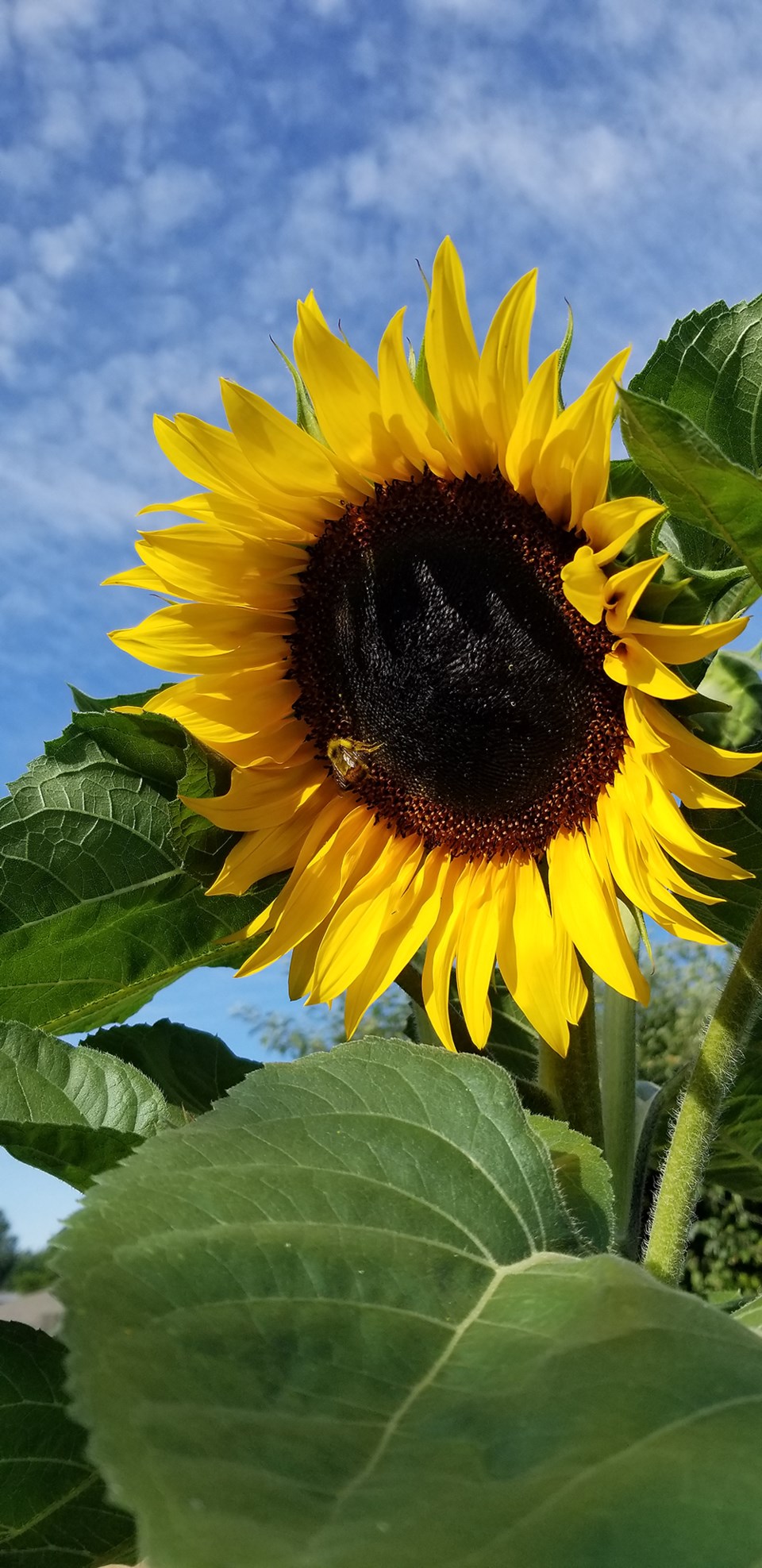Over a few years now, my Healthy Living column has often been tucked inside the Peak. I have shared details of the difficulties in my journey with addiction, anxiety disorder and agoraphobia.
Through the process of research and writing in a vaguely essay form, I’ve benefitted from this exchange immeasurably. If even one person has found my written ideas and experiences useful in their similar struggle, our mutually symbiotic relationship makes me humble and happy in a deep, profound way.
In the natural world, which we are intricately connected, the examples of mutually symbiotic relationships are plentiful. The bee pollinates the flower, and the flower reciprocates with the gift of nectar, which, in return, gives the energy to fulfill the bee’s role and the interconnectedness of life does its beautiful thing.
Mutual symbiosis can give us a tangible model of how functional relationships can work. Aside from the exchange of goods or services, there is an essential connection between biological life of different species. We are part of something bigger, interconnected with everything in our ecosystem. With that awareness in tow, we might treat the earth with more kindness and forward-thinking attitudes when applying our current imposing needs and technologies.
With the luxury of 20/20 hindsight, I can see over-romanticizing the idea of the “artist” alone in the wilderness, combined with an existing habit to self-medicate with alcohol or drugs, and a predisposed social anxiety, was a lethal combination in my case. That convergence of events and situations might be roughly where the cause and effect of life initially pointed me in a terrible life trajectory of self-harm and suicide ideation.
Its hard to exactly pinpoint why some people can enjoy life’s social rituals in a positive and connected way, while others, like me, seem to fail tragically. However, that is unimportant right now.
Sharing spirit
Right now, the positive experiences I have found in my turn toward wellness is something to happily share in the spirit of interconnectedness.
Meditation, medication and science-based cognitive behavioural therapy (CBT) are the big three factors that led me “out of the wilderness” and into the hopeful sober place I am writing from. Medication is just like any human-created technology surrounding us in our ultra-high-tech times. It can be very helpful, maybe lifesaving, when thoughtfully and cautiously administered with the knowledge and help of a psychiatrist.
Transversely, the misuse of prescribed drugs is a modern tragedy of an epidemic size. My pharmacologic intervention was, and is, a long ongoing process. Neuroreceptors create pathways in our brains, like cutting a trail in the forest. When that trail is repeatedly used it becomes easier to hike, even if the destination is an unhealthy or dangerous place.
Medication influences neurochemicals like dopamine and serotonin off their beaten paths to show my brain better routes. It’s a cause-and-effect situation between neurochemicals and actions which, hopefully, will lead to a healthy place.
Meditation, at the beginning, was like trying to climb an icy glacier in flip-flops. With breathing patterns creating an introspective ease slightly distanced from automatic thoughts, the meditator tries to calm the internal scene down. Thought creates reality, negative or positive. Automatic negative thoughts (ANTS) were abundant in my unbalanced, chaotic mind.
Meditation’s role on the road to wellness is to interrupt the introspective process of thought and action and take a quiet control of self. If my chaotic, anxious mind and body can reap benefits from meditation, then everyone has hope. I was the unlikeliest candidate for prolonged mediative practices. Yet, here I am, an example that determination and perseverance can move mountains, even in flip-flops.
Essential element
CBT is is essential in this information-heavy, rabbit-hole-littered landscape. Our thoughts and perceptions of any situation creates emotion directed responses, which often can be self-destructive when left unexamined. CBT provides a toolbox of strategies to understand why we are so frustrated, angry or have any unwanted negative emotional responses monkeywrenching our real-time behaviour.
CBT was surprisingly effective and it took place for me in a group setting that provided a social connectedness I needed and, also, some science-based certainty in uncertain times.
The foundation underneath pharmacholic therapies, eastern spiritual influences practices and western behavioual science is interconnectedness. Unlike Chris McCandless, whose life was told in the film Into The Wild, my story about coming out of the wilderness has a happy continued narrative.
With a solid strategy in place and the awareness that community is key, mental wellness is an attainable goal for all.
Robert Skender is a qathet region freelance writer and health commentator who contributes a regular column for the Peak.
Join the Peak's email list for the top headlines right in your inbox Monday to Friday.



